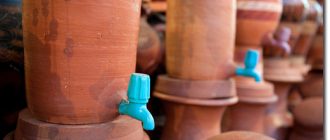Want to buy Italian Capodimonte? Read on for facts and info on the beautiful porcelain products produced by Capodimonte in Italy…
Capodimonte porcelain products were first produced in the city of Naples in Italy back in 1759. The production of porcelain products engineered act of 1780 at the Royal factory in Naples. Today historical Capodimonte porcelain products are extremely rare to find. The range of products made by the company includes figurines, mid-century electric lamps, molded flowers and a range of other decorative objects.
Porcelain products developed by Capodimonte are marked with “Blue N” stand under a crown mark. Although most of the products have a similar marking, some may display a slight variation of the original stamp. In other cases they would also be marked with the symbol of the factory in which they were produced.
History of Capodimonte in Italy
Capodimonte has a history that dates back to many centuries in Italy. As mentioned above the initiation of Capodimonte porcelain products took place in the mid 1700s. From that period onwards the name of Capodimonte became associated with the finest quality Neapolitan porcelain and ceramic products.
The first facility where the porcelain and ceramic products were produced was the Royal factory which was set up by King Charles of Naples. It was after King Charles marriage to the granddaughter of Augustus II, who was regarded as being the founder of the first European-based forces in factory that the Royal factory was set up in Naples.
Since King Charles had married into a family that was strongly associated with porcelain, he also started to develop a sense of curiosity about porcelain. Soon enough this curiosity turned into a passion in pursuit of which he initiated much research and development eventually setting up the Royal factory.
Over years of research and development the Italians were able to perfect the formula for porcelain paste. Following this, the king recruited a large number of skilled craftsmen and artisans to produce high quality Capodimonte pieces. Amongst the porcelain products being produced at the facility were plates, small and large bowls, vases, jugs of different sizes, sugar bowls, tea and coffee cups, teapots, tea caddies and snuff boxes. One of their special categories was that of walking stick handles that were mounted in gold.
After a period of time of producing the porcelain products in Italy, the factory was shifted to Spain. Several decades later King Fredinand, who was the son of King Charles shifted the factory back to Italy.
Although Capodimonte porcelain products are highly sought after by collectors from all over the world, you will not find them to be up for grabs in antique shops today. This is primarily because their value is so high that they are safely kept in museums and high-end collections only. This is especially true with regards to the oldest surviving samples from the Royal factory of Naples.
Modern collectors may be able to find some categories of Capodimonte porcelain products such as paperweight, electric lamps, figurines and exquisitely molded flowers from the later years.





